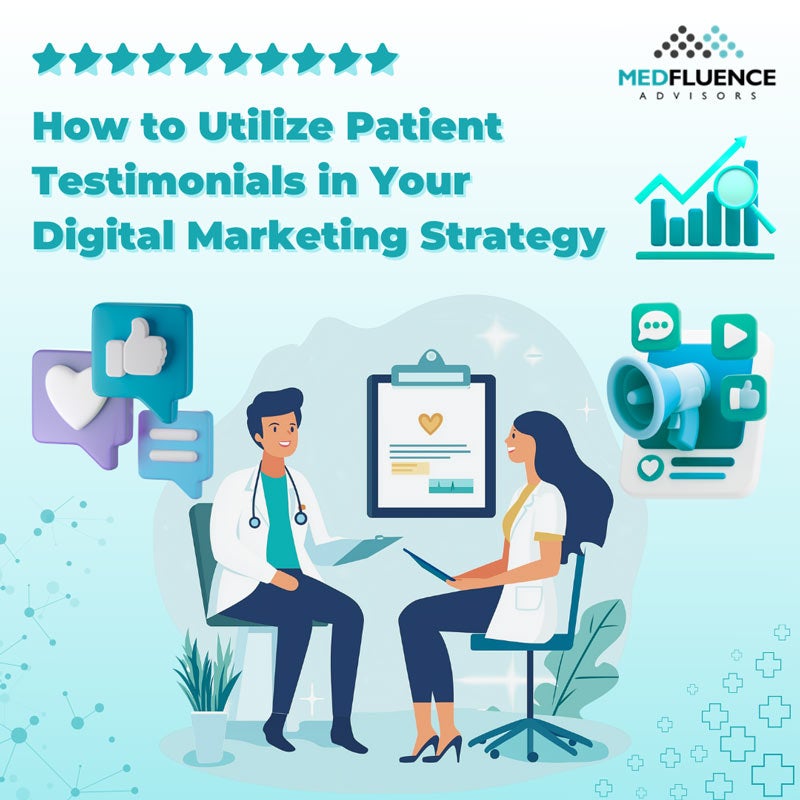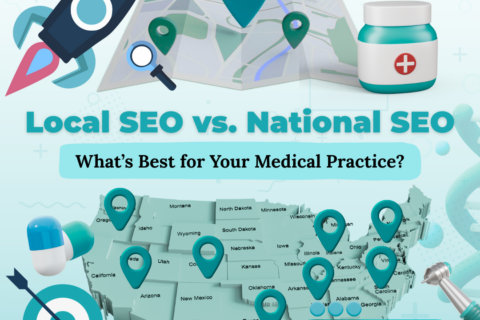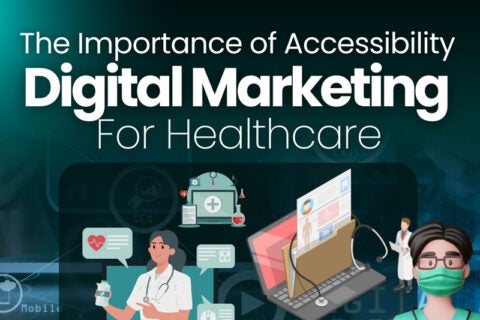How to Utilize Patient Testimonials in Your Digital Marketing Strategy
Healthcare decisions represent some of the most personal choices consumers make today. Unlike conventional purchasing journeys, selecting a healthcare provider involves complex considerations spanning trust, expertise, and the fundamental human need for understanding.
Patient testimonials occupy a unique strategic position in this landscape—not as marketing embellishments, but as authentic evidence of a practice’s approach to care. They transform abstract promises into tangible experiences, allowing potential patients to envision their own healthcare journey before it begins.
The sophisticated healthcare consumer approaches provider selection with discernment, seeking signals that transcend traditional promotional messaging. When thoughtfully integrated into your digital strategy, patient narratives create a transparent framework where clinical expertise is validated through lived experience.
This approach demands more than collecting favorable reviews. It requires creating an intentional architecture where authentic patient voices are positioned to address the genuine concerns of those seeking care. Forward-thinking practices recognize that testimonials serve as bridges between clinical capabilities and human connection—the foundation upon which meaningful healthcare relationships are built.

The Benefits of Patient Testimonials in Healthcare Marketing
Patient testimonials play a crucial role in healthcare marketing by providing real-world validation of the quality of care a practice delivers. Unlike traditional advertising, which relies on self-promotion, testimonials allow potential patients to hear directly from others who have experienced the service firsthand.
Establishing Trust and Social Proof
Trust is the foundation of any healthcare decision. When individuals seek medical care, they are often vulnerable, uncertain, and looking for reassurance that they are making the right choice. A well-placed testimonial can provide that sense of confidence by offering insight into the patient experience from someone who has already walked that path.
Testimonials act as social proof, a psychological phenomenon where people rely on the experiences and actions of others to make decisions. When potential patients see numerous positive experiences shared by others, they feel more comfortable choosing a provider because they perceive the practice as trusted and reliable. This is especially powerful in healthcare, where people want assurance that they will receive quality care before committing to an appointment.
The key to maximizing this trust-building effect is to showcase testimonials that highlight various aspects of the patient journey. These should include feedback on the provider’s expertise, the friendliness of the staff, the ease of scheduling appointments, and the overall patient experience. The more specific and relatable the testimonials, the stronger their impact on prospective patients.
Influencing Patient Decision-Making
When patients search for a healthcare provider, they typically compare multiple options before making a final decision. Online testimonials can be the deciding factor that pushes a patient toward one practice over another. Seeing positive experiences from real people helps potential patients visualize what their own experience might be like, reducing hesitation and increasing the likelihood that they will book an appointment.
Additionally, testimonials that address common patient concerns—such as fears about a procedure, worries about insurance coverage, or hesitations about switching doctors—can be particularly effective. If a testimonial directly answers a question a prospective patient has, it can remove barriers to making an appointment and increase the provider’s patient conversion rates.

Boosting SEO and Online Visibility
Incorporating patient testimonials into a digital marketing strategy does more than just build trust—it also enhances a practice’s search engine rankings and online visibility. Google and other search engines prioritize fresh, relevant, and user-generated content, which means that testimonials can contribute to higher rankings in local search results.
When patient reviews and testimonials contain relevant keywords—such as the name of the provider, the medical specialty, or the city in which the practice is located—they can help improve local SEO. This increases the chances that a practice appears in searches like “best ENT doctor near me” or “top-rated dermatologist in [city].” The more frequently new testimonials are added, the more updated and relevant the website appears to search engines, which can result in higher rankings and more organic traffic.
Strengthening Patient-Provider Relationships
The impact of patient testimonials extends beyond attracting new patients; it also plays a significant role in strengthening relationships with existing patients. When a provider showcases testimonials, it signals to current patients that their feedback is valued and that their experiences matter. This fosters a sense of connection between the practice and its patient community, increasing loyalty and patient retention.
Additionally, featuring patient success stories on a practice’s website or social media can give current patients hope and reassurance about their own treatment journey. For example, a testimonial from someone who successfully overcame chronic sinus infections after treatment can motivate another patient dealing with the same condition to move forward with a similar treatment plan. This creates a cycle of positive reinforcement, where patients feel more confident in their healthcare decisions, leading to better adherence to treatment plans and overall satisfaction with their care.

Types of Patient Testimonials to Leverage
Patient testimonials come in many forms, each offering unique benefits in healthcare marketing. The key to maximizing their impact is using a diverse mix of testimonials across multiple platforms. From short written quotes to in-depth case studies, testimonials provide social proof that reassures potential patients and builds credibility. Below are the most effective types of patient testimonials and how to use them in your digital marketing strategy.
Written Testimonials – Short Quotes for Websites and Social Media
Written testimonials are one of the easiest and most versatile ways to showcase patient feedback. These typically come in the form of short, compelling quotes that highlight a patient’s experience with a provider, treatment, or overall care.
These testimonials are effective because they are:
✅ Easy to read and digest – A few sentences can quickly convey trust and satisfaction.
✅ Highly shareable – Can be featured across websites, landing pages, and social media.
✅ SEO-friendly – Written content can include location-based keywords, improving search rankings.
Where to Use Them:
- Homepage: Feature powerful quotes near the top of your homepage to build immediate trust.
- Service Pages: Use testimonials that speak directly to specific treatments or procedures.
- Social Media Posts: Overlay testimonials on branded graphics and share them on Facebook, Instagram, and LinkedIn.
- Email Marketing: Include testimonials in patient newsletters and follow-up emails.
Example:
“Dr. Smith and his team changed my life! After years of dealing with chronic sinus infections, I finally found relief. The treatment was seamless, and I can breathe better than ever!” – Sarah P., Austin, TX
Video Testimonials – Engaging, Authentic Storytelling
Video testimonials are among the most persuasive forms of patient feedback because they bring real patient experiences to life. Seeing and hearing a real person talk about their experience creates a deeper emotional connection than written words alone.
Why Video Testimonials Work:
🎥 Authenticity: Patients sharing their stories in their own words builds trust.
🎥 Engagement: Video content keeps users on your website longer and increases social media interactions.
🎥 Versatility: Clips can be used across websites, social media, and even in waiting rooms.
Where to Use Them:
- Website Testimonial Page: Embed videos to create a dedicated space for patient success stories.
- Social Media Stories & Reels: Short, engaging clips perform well on Instagram, Facebook, and TikTok.
- YouTube Channel: Upload longer patient interviews for SEO and search visibility.
- Waiting Room Screens: Showcase testimonials in-office to reassure existing patients.
Example:
A patient who underwent sinus surgery shares their journey:
“I suffered from sinus infections for over a decade. After my procedure with Dr. Patel, my headaches are gone, I can finally breathe, and I feel like a new person!”
Google & Third-Party Reviews – Leveraging Patient Ratings and Comments
Online reviews are one of the first things potential patients look at when researching a healthcare provider. Google Business Profile, Healthgrades, Yelp, and other third-party platforms are critical for building trust and improving local SEO rankings.
Why Third-Party Reviews Matter:
⭐ Patients trust them. Studies show that 77% of people read online reviews before choosing a doctor.
⭐ They boost local SEO. Google prioritizes businesses with frequent, high-quality reviews.
⭐ They influence decision-making. A provider with hundreds of positive reviews appears more reputable than one with just a few.
Where to Use Them:
- Google Business Profile: Encourage patients to leave detailed reviews with keywords (e.g., “best ENT in Dallas”).
- Website Review Widgets: Integrate live Google or Healthgrades reviews onto your homepage.
- Social Media Highlights: Share screenshots of glowing 5-star reviews as posts or stories.
- PPC Ads & Landing Pages: Use patient ratings in paid ads to boost conversion rates.
Example Review:
“Dr. Williams and his team were fantastic! I was nervous about my allergy treatment, but they walked me through everything. I haven’t had a flare-up in months! Highly recommend!” – ⭐⭐⭐⭐⭐ Google Review
Case Studies & Success Stories – In-Depth Patient Journeys
While short testimonials and reviews provide quick validation, case studies offer a deeper, more detailed look at a patient’s experience. These stories showcase the full treatment journey, from the patient’s initial symptoms to their successful outcome.
Why Case Studies Work:
📖 Provide detailed proof of success – Walks prospective patients through the entire process.
📖 Differentiate your practice – Demonstrates expertise and personalized care.
📖 Address common concerns – Helps patients overcome hesitation by seeing real-life results.
Where to Use Them:
- Website Blog Section: Publish detailed case studies with before-and-after photos.
- Service Pages: Highlight successful patient outcomes relevant to specific treatments.
- Social Media Posts & Articles: Break long-form stories into engaging, shareable posts.
- Physician Consultations: Use case studies as real-life examples to educate new patients.
Example Case Study:
“John, a 42-year-old runner, struggled with chronic sinus issues for years. He tried medications and home remedies, but nothing worked. After consulting with Dr. Martinez, he underwent a minimally invasive balloon sinuplasty. Within weeks, John was back to running, breathing better than ever. Now, he shares his story to help others dealing with the same condition.”
Case studies humanize the treatment process and make it easier for potential patients to relate to success stories. Adding visual elements—such as patient photos, charts, or even short video clips—can enhance their impact.
Simply collecting patient testimonials is not enough—they need to be strategically placed where they will have the greatest impact. Potential patients are often searching for reassurance before booking an appointment, and testimonials serve as powerful trust signals that can influence their decision. By integrating them into various digital marketing channels, healthcare providers can enhance credibility, improve engagement, and drive more patient inquiries.
Best Practices for Collecting and Displaying Testimonials
Testimonials are most effective when they are authentic, detailed, and well-placed. However, collecting and displaying them must be done ethically and strategically to maintain compliance and ensure maximum impact.
Obtaining Patient Consent – Legal and Ethical Considerations (HIPAA Compliance)
Because healthcare involves sensitive personal information, it is essential to obtain explicit written consent before using patient testimonials in marketing materials. This is particularly important for video testimonials and case studies, where patients may share details about their treatment.
- Use HIPAA-Compliant Consent Forms: Every patient providing a testimonial should sign a written release form allowing the practice to use their feedback in marketing.
- Keep Testimonials General if Necessary: If a patient is hesitant to provide a testimonial, using their initials instead of full names or making feedback more generalized can help protect privacy.
- Avoid Discussing Specific Diagnoses: Testimonials should focus on patient satisfaction and outcomes rather than detailed medical history to comply with privacy laws.
Asking for Testimonials the Right Way – Timing and Approach for Effective Collection
The way a practice requests testimonials can impact how many responses are received and the quality of the feedback. The best time to ask is shortly after a positive patient experience, when the individual is most engaged and appreciative.
- Send a Follow-Up Email or Text: Automated review requests immediately after an appointment increase response rates.
- Ask in Person for Video Testimonials: Staff members can encourage satisfied patients to share their experience on video before leaving the clinic.
- Offer Multiple Submission Methods: Some patients prefer to write a review, while others may be comfortable with audio or video recordings.
Encouraging Detailed, Authentic Feedback – What Makes a Compelling Testimonial
The most effective testimonials are specific and engaging rather than generic. Instead of simply saying, “Great doctor!”, a stronger testimonial would be:
“I struggled with chronic sinus infections for years, and nothing seemed to help. Dr. Martinez recommended a minimally invasive procedure, and now I can finally breathe freely again. The staff was kind, and the process was seamless. I highly recommend this practice!”
Encouraging patients to share:
✔ What problem they faced
✔ What treatment they received
✔ How it improved their life
…creates a more compelling narrative that resonates with potential patients.
Enhancing Testimonials with Visuals – Using Photos and Video for Credibility
Text-based testimonials are effective, but visual elements increase engagement and trust.
- Patient Photos: Even a simple picture of the patient (with consent) next to their testimonial makes it more relatable.
- Video Clips: Short, high-quality patient videos are more persuasive than written text alone.
- Branded Graphics: Overlaying testimonials onto professionally designed graphics makes them more shareable on social media.
By following these best practices, healthcare providers can maximize the impact of patient testimonials, ensuring they are both ethical and effective in attracting new patients.
From Patient Stories to Lasting Trust: The Narrative Advantage
As healthcare continues to evolve, practices that position patient narratives as strategic assets rather than marketing accessories will forge deeper connections with potential patients. By creating digital environments where authentic voices validate clinical excellence, you establish trust through substance rather than style.
Your practice delivers meaningful care experiences daily. Through thoughtful testimonial integration, these experiences become powerful strategic assets that communicate your unique value in ways conventional marketing cannot achieve. Let us help you grow your practice.


